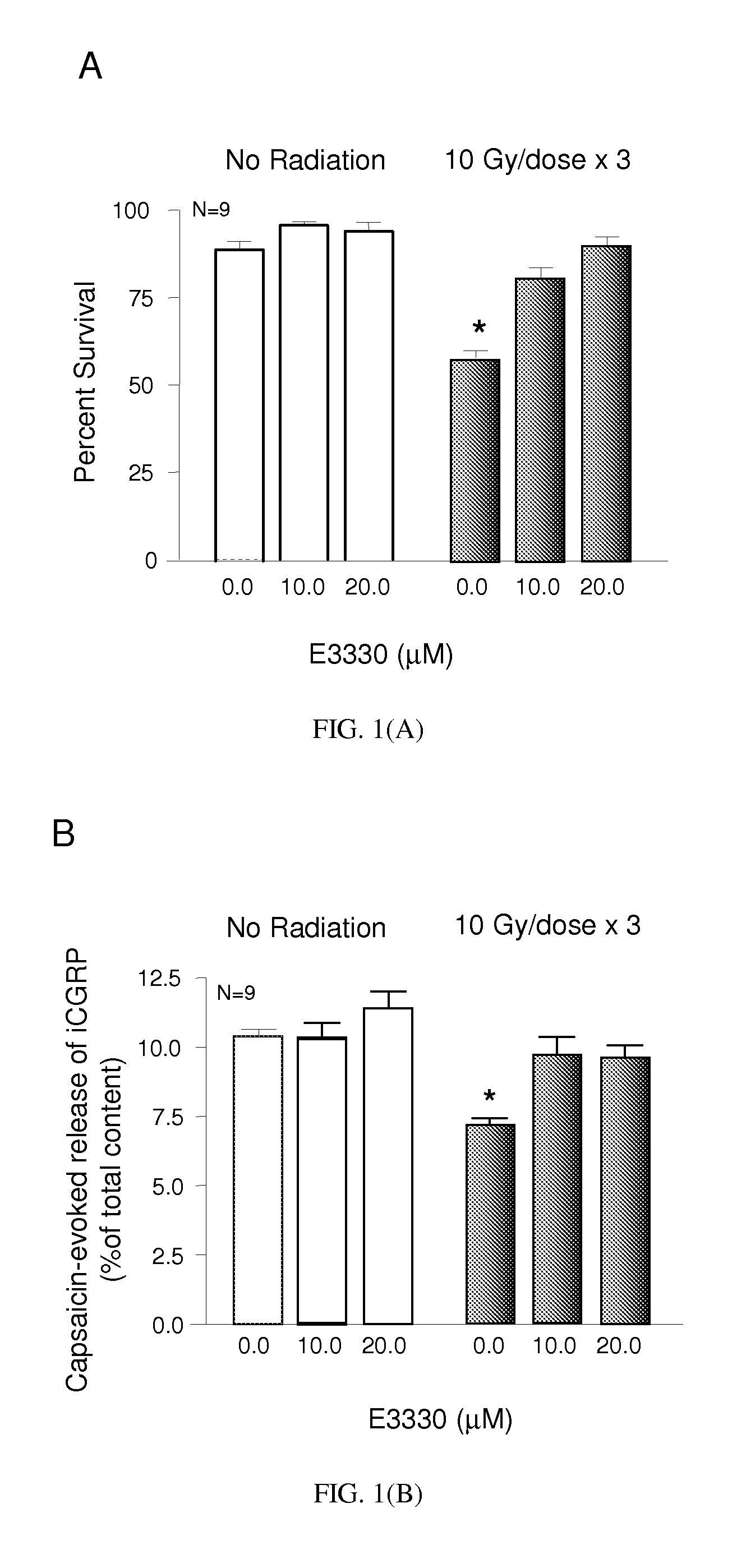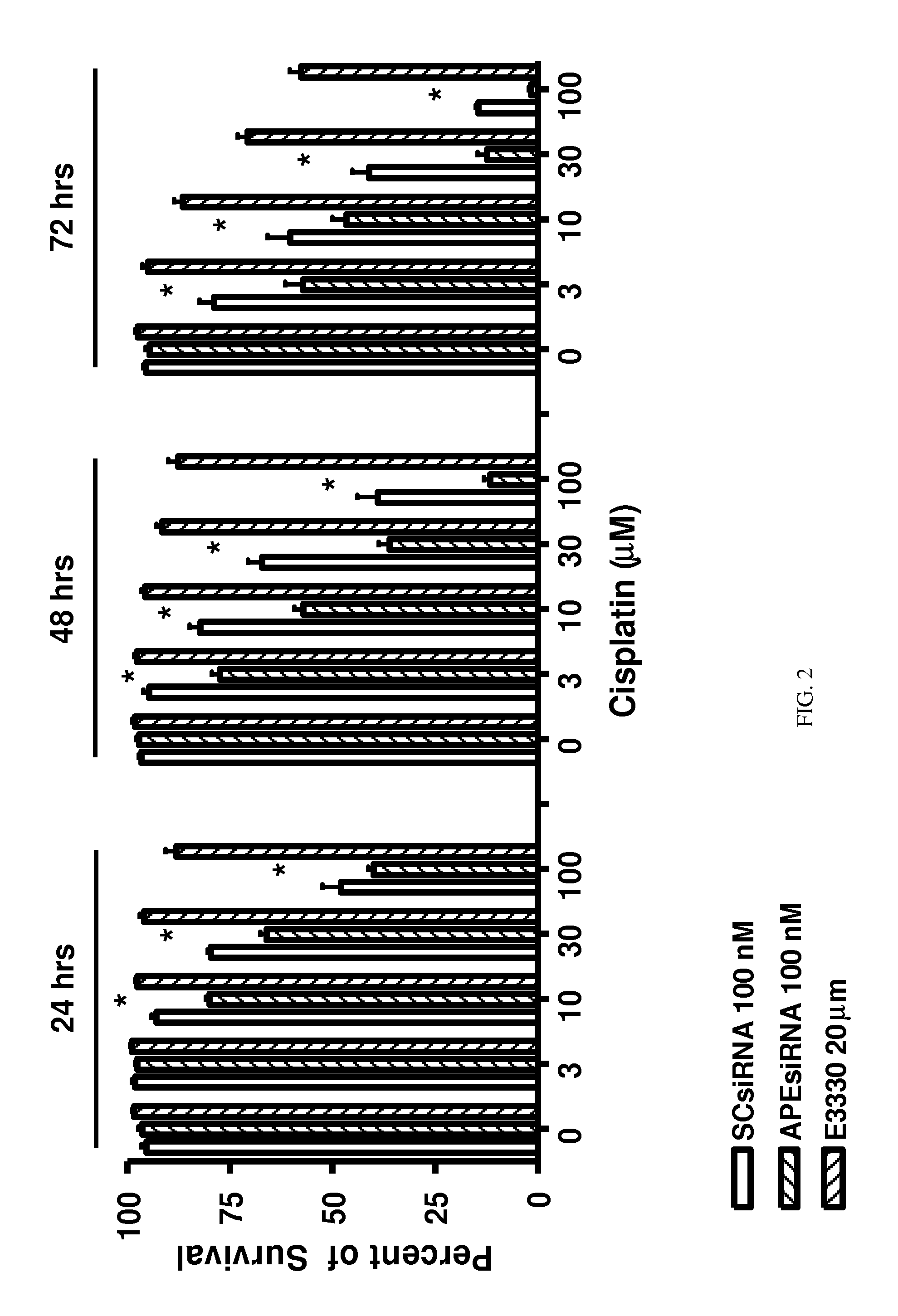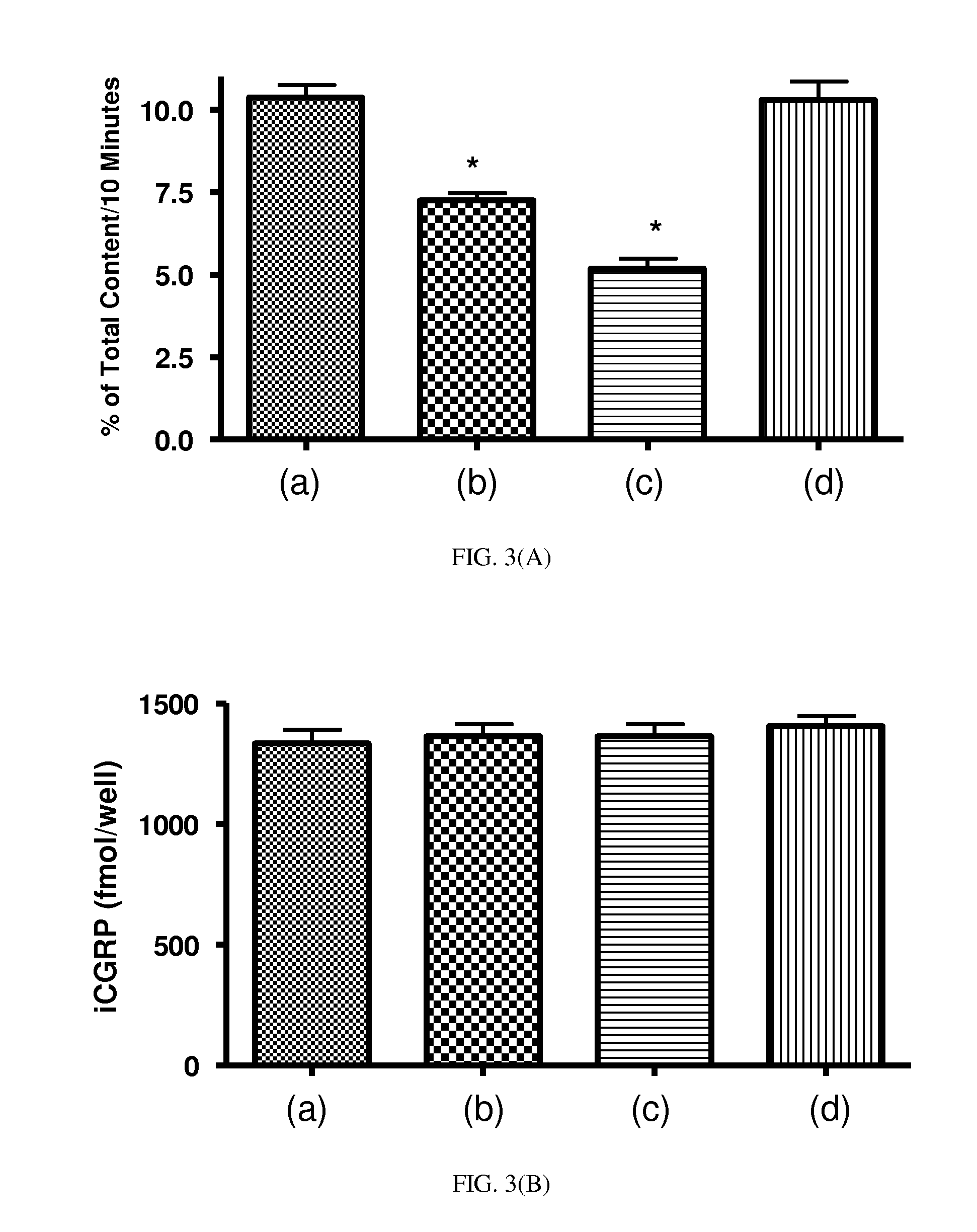Compounds, compositions and methods for treating oxidative DNA damage disorders
a technology of oxidative dna damage and compounds, applied in the field of compound compositions and methods for treating oxidative dna damage disorders, can solve the problems of ir causing significant neurotoxicity, no standard and effective treatments are available to prevent or reverse such therapy-induced neurotoxicity, and reducing sensory neuron function, so as to improve early-onset radiation-induced toxicity, reduce capsaicin-evoked cgrp release, and reduce the effect of capsaici
Inactive Publication Date: 2014-05-08
INDIANA UNIV RES & TECH CORP
View PDF2 Cites 4 Cited by
- Summary
- Abstract
- Description
- Claims
- Application Information
AI Technical Summary
Benefits of technology
This patent text discusses the discovery of a protein called APE1 and its role in protecting sensory neurons from damage caused by chemotherapy and radiation. The text describes how modulating the expression of APE1 can reduce neurotoxicity and how inhibiting its redox function can enhance its neuroprotective activity. The technical effects of this patent include the development of compounds and methods to protect and treat neuronal damage, which can improve the quality of life for cancer survivors.
Problems solved by technology
Evidence in patients and in animal models demonstrates that cancer therapies are often accompanied by neurological side effects.
Furthermore, there are no standard and effective treatments available to prevent or reverse such therapy-induced neurotoxicity.
It has also been reported that IR can produce significant neurotoxicity, especially upon direct exposure to central nervous system tissues [6, 7].
Although many IR neurotoxicity studies focus on the CNS, such radiation therapy may also cause significant toxicity to peripheral neurons (autonomic, motor, or sensory neurons).
However, the mechanisms by which IR produces neurotoxicity remain undetermined.
Further, but without being bound by theory, it is believed herein that, in situ, radiation-induced oxidative damage to DNA may subsequently alter neuronal function and cause cell death.
Method used
the structure of the environmentally friendly knitted fabric provided by the present invention; figure 2 Flow chart of the yarn wrapping machine for environmentally friendly knitted fabrics and storage devices; image 3 Is the parameter map of the yarn covering machine
View moreImage
Smart Image Click on the blue labels to locate them in the text.
Smart ImageViewing Examples
Examples
Experimental program
Comparison scheme
Effect test
example
[0183]Redox EMSA Assay. Conventional electrophoresis measuring Ape1 expression with 0.02 mM DTT is used to evaluate test compounds. Additional details are described in Fishel et al. Mol Cancer Ther. 2011 September; 10(9):1698-708 & Luo et al., Antioxid Redox Signal. 2008 November; 10(11):1853-67.
the structure of the environmentally friendly knitted fabric provided by the present invention; figure 2 Flow chart of the yarn wrapping machine for environmentally friendly knitted fabrics and storage devices; image 3 Is the parameter map of the yarn covering machine
Login to View More PUM
| Property | Measurement | Unit |
|---|---|---|
| pH | aaaaa | aaaaa |
| volume | aaaaa | aaaaa |
| angle | aaaaa | aaaaa |
Login to View More
Abstract
Compounds, compositions, and formulations, and accompanying methods useful for treating disorders arising from oxidative DNA damage, including oxidative DNA damage resulting from ionizing radiation or other therapy are described herein.
Description
CROSS-REFERENCE TO RELATED APPLICATIONS[0001]This application claims priority under 35 U.S.C. §119(e) to U.S. Provisional Application Ser. No. 61 / 493,169 filed Jun. 3, 2011. The disclosure of which is incorporated herein by reference.TECHNICAL FIELD[0002]The present invention relates to compounds, compositions and formulations useful for treating disorders arising from oxidative DNA damage, including oxidative DNA damage resulting from ionizing radiation or other therapy.BACKGROUND AND SUMMARY OF THE INVENTION[0003]Evidence in patients and in animal models demonstrates that cancer therapies are often accompanied by neurological side effects. Two major neurological side effects are cognitive dysfunction, also referred to as “chemobrain,” and chemotherapy-induced peripheral neuropathy (CIPN). Two such therapies that cause neurological side effects include ionizing radiation and drugs that act through mechanisms causing DNA damage, such as platinum-containing drugs, taxanes, and the li...
Claims
the structure of the environmentally friendly knitted fabric provided by the present invention; figure 2 Flow chart of the yarn wrapping machine for environmentally friendly knitted fabrics and storage devices; image 3 Is the parameter map of the yarn covering machine
Login to View More Application Information
Patent Timeline
 Login to View More
Login to View More Patent Type & Authority Applications(United States)
IPC IPC(8): C07C235/78C07C66/00C07D295/185
CPCC07C235/78C07D295/185C07C66/00A61K31/12A61K31/122A61K31/16A61K31/165A61K31/19A61K31/192A61K31/20A61K31/21A61K31/495A61K31/5375
Inventor KELLEY, MARK R.VASKO, MICHAEL R.
Owner INDIANA UNIV RES & TECH CORP
Features
- R&D
- Intellectual Property
- Life Sciences
- Materials
- Tech Scout
Why Patsnap Eureka
- Unparalleled Data Quality
- Higher Quality Content
- 60% Fewer Hallucinations
Social media
Patsnap Eureka Blog
Learn More Browse by: Latest US Patents, China's latest patents, Technical Efficacy Thesaurus, Application Domain, Technology Topic, Popular Technical Reports.
© 2025 PatSnap. All rights reserved.Legal|Privacy policy|Modern Slavery Act Transparency Statement|Sitemap|About US| Contact US: help@patsnap.com



